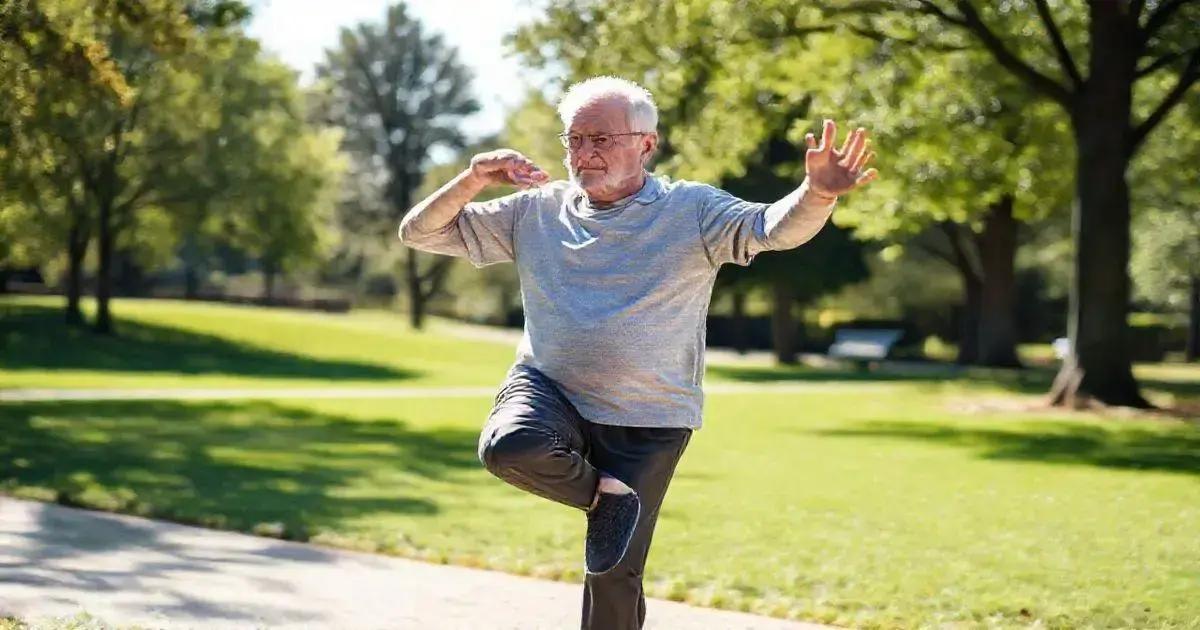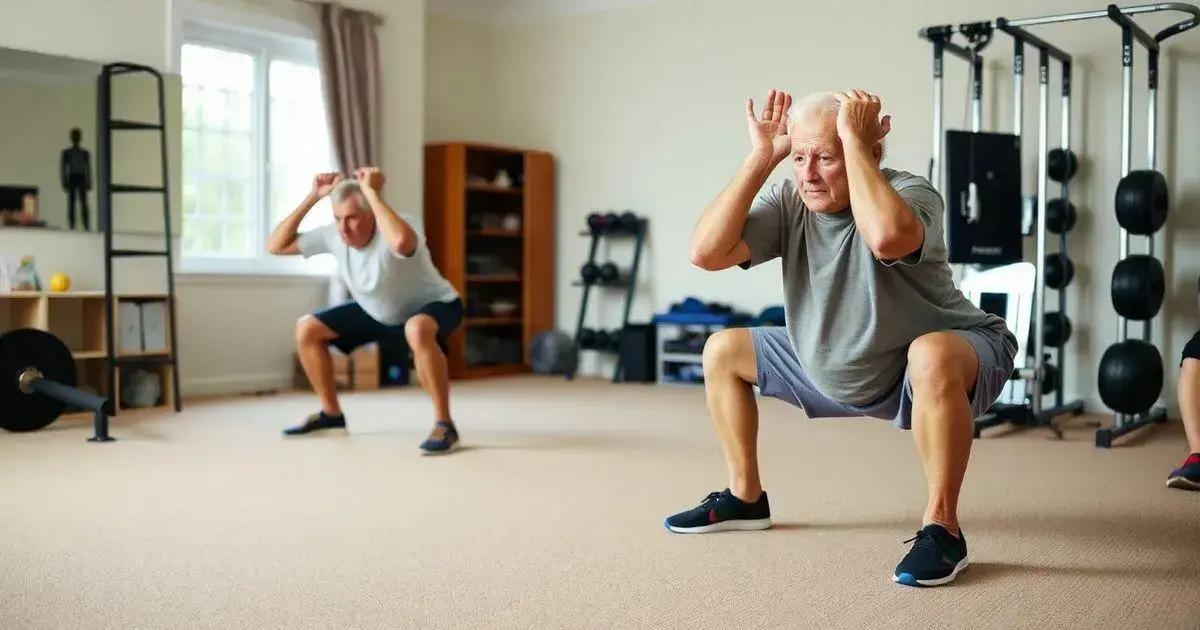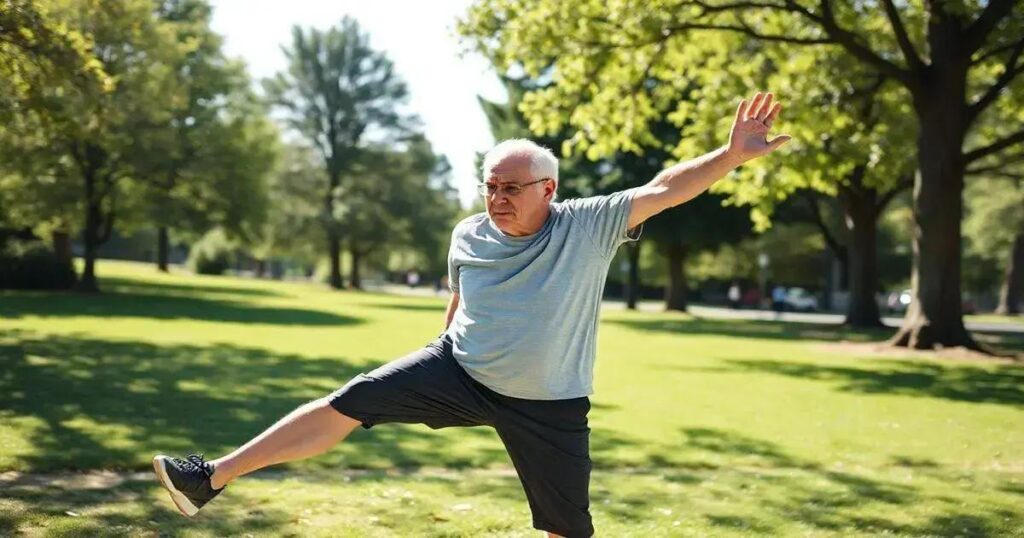The best techniques to avoid muscle strain in your 50s include warming up properly, practicing effective stretching, incorporating strength training for better stability, and listening to your body’s signals to prevent injuries and maintain an active lifestyle.
As we age, particularly in our 50s, the risk of muscle strain increases significantly. It’s crucial for everyone in this age group to adopt effective strategies to maintain their physical well-being. In this article, we will discuss the best techniques to avoid muscle strain, including the importance of warm-up exercises, effective stretching techniques, strength training for enhanced stability, and how to listen to your body’s signals. By incorporating these methods into your routine, you can enjoy a healthier, more active lifestyle without the worry of injury.
Importance of Warm-up Exercises

Warm-up exercises are essential for everyone, especially those in their 50s. As we age, our muscles and joints become less flexible, making them more prone to injury. A good warm-up increases blood flow to your muscles and enhances their elasticity, preparing your body for physical activity.
Why Warm-Up Exercises Matter
Engaging in warm-up routines can significantly reduce the risk of muscle strains. When you warm up, you gradually increase your heart rate and allow your muscles to adapt to the demands of exercise. This transition is vital for keeping your muscles and joints healthy.
Effective Warm-Up Techniques
There are many ways to warm up effectively. Begin with light cardio, such as walking or cycling at a slow pace, for about 5 to 10 minutes. Next, include dynamic stretches—these are stretches that involve movement. Examples are arm circles, leg swings, and torso twists. Dynamic stretches prepare the muscles and improve coordination, which is crucial for reducing the risk of injury.
Examples of Warm-Up Routines
Here’s a simple warm-up routine:
- 5 minutes of brisk walking or light jogging
- 10 arm circles (5 in each direction)
- 10 leg swings (5 for each leg, front to back)
- 5 torso twists (rotation from side to side)
Finish your warm-up with some gentle movements specific to your planned exercise. Always remember, a proper warm-up is the best defense against injuries.
Effective Stretching Techniques

Effective stretching techniques play a crucial role in preventing muscle strain, especially as we age. Stretching helps improve flexibility and range of motion, making it easier to perform daily activities without injury. Here are some effective techniques to incorporate into your routine.
Types of Stretching
1. Static Stretching: This involves holding a stretch for a specific period, usually 15 to 30 seconds. Examples include:
- Hamstring stretch: Sit on the ground, extend one leg, and reach towards your toes.
- Quadriceps stretch: Stand on one leg and pull your other heel towards your buttock.
2. Dynamic Stretching: These stretches involve movement and are great for warming up. Examples are:
- Leg swings: Swing one leg forward and back while holding onto a stable object.
- Arm circles: Rotate your arms in small circles to warm up your shoulders.
When to Stretch
Stretching is most effective when muscles are warm. The best times to stretch are:
- After a warm-up: Perform dynamic stretches before exercising.
- After workouts: Cool down with static stretches to improve flexibility.
Safety Tips for Stretching
To stretch safely and effectively:
- Never bounce while stretching; this can lead to injuries.
- Breathe deeply and relax into each stretch for better results.
- Listen to your body: If a stretch causes pain, ease out of it.
Incorporating these stretching techniques into your routine can greatly enhance your body’s resilience and reduce the chances of experiencing muscle strain.
Strength Training for Stability

Strength training is essential for improving stability and reducing the risk of muscle strain, particularly for those in their 50s. Engaging in strength training exercises routinely can enhance muscle tone, improve balance, and support joint health.
Benefits of Strength Training
1. Increases Muscle Mass: As we age, muscle mass naturally declines. Strength training helps counteract this by building and maintaining muscle, which is crucial for overall strength.
2. Improves Balance: Strength training enhances your body’s stability, which reduces the risk of falls. Better balance means better control of your movements.
Effective Strength Training Exercises
Some effective exercises to include in your routine are:
- Squats: These help strengthen your legs and improve your overall stability. Stand with feet shoulder-width apart and lower your body as if about to sit in a chair.
- Push-ups: Great for building upper body strength. If full push-ups are too challenging, start with your knees on the ground.
- Resistance Band Exercises: Use bands for added resistance during exercises like bicep curls and seated rows.
Recommended Frequency
For best results, aim to do strength training exercises at least two to three times a week. Begin with light weights or resistance bands and gradually increase the resistance as you become more comfortable and capable.
Safety Tips for Strength Training
To ensure safety during your strength training:
- Use proper form to prevent injuries. Consider working with a trainer if you’re unsure.
- Start slowly and increase weights gradually.
- Always warm up before your session and cool down afterward.
Incorporating strength training into your exercise routine will significantly enhance your physical stability and help in avoiding muscle strain.
Listening to Your Body’s Signals

Listening to your body’s signals is a key strategy for avoiding muscle strain, especially in your 50s. Paying attention to how your body feels during and after exercise can help you adjust your routine to prevent injuries.
Recognizing Warning Signs
It’s important to recognize the early warning signs that your body might be sending. Here are some common signals:
- Pain: If you experience pain in a muscle or joint, it’s your body telling you to stop or slow down.
- Fatigue: Feeling too tired can indicate that your body needs rest or recovery time.
- Tightness: If your muscles are feeling tight, it may be a sign that they are not adequately warmed up or this could be a precursor to strain.
Adjusting Your Exercise Routine
Based on these signals, you can adjust your routine effectively. For example:
- If you feel pain, modify the exercise or switch to a less intense activity like walking or swimming.
- Allow for extra rest days if you are feeling fatigued. Recovery is essential, especially as you age.
- Incorporate more stretching or a longer warm-up if you regularly experience tightness.
Communicating With Your Trainer or Doctor
If you have a trainer or healthcare provider, communicate any discomfort or unusual feelings. This can help tailor a fitness plan that fits your individual needs, especially when trying new exercises.
The Importance of Being Mindful
Being mindful during your workouts is also vital. Focus on how your body moves and how it feels. This awareness will help you tune into your body’s needs, allowing you to adapt as necessary.
By listening to your body’s signals, you can exercise safely and effectively, reducing the risk of muscle strain.
In Summary, Techniques to Avoid Muscle Strain in Your 50s
As we enter our 50s, prioritizing our physical health becomes more important than ever. Implementing the best techniques to avoid muscle strain can lead to a healthier and more active lifestyle. Starting with proper warm-up exercises prepares the body for activity, while effective stretching techniques improve flexibility and reduce the risk of injuries.
Incorporating strength training enhances stability and builds muscle mass, helping to maintain strength as we age. Lastly, listening to your body’s signals allows you to adjust your activities based on how you feel, reducing the likelihood of strain or injury.
By following these essential techniques, you can remain active, agile, and injury-free well into your later years.
FAQ – Frequently Asked Questions About Avoiding Muscle Strain in Your 50s
What are the best techniques to avoid muscle strain?
The best techniques include proper warm-up exercises, effective stretching, strength training for stability, and listening to your body’s signals.
Why is warming up important before exercise?
Warming up increases blood flow to the muscles, improves flexibility, and reduces the risk of injuries like muscle strains.
How often should I stretch to prevent muscle strain?
It is recommended to stretch daily, especially before and after exercising, to maintain flexibility and reduce tightness.
What strength training exercises are good for stability?
Exercises like squats, push-ups, and resistance band workouts are effective for enhancing stability and muscle strength.
How can I tell if I’m overdoing it during workouts?
Pay attention to your body’s signals. If you feel pain, excessive fatigue, or tightness, it might be a sign to reduce intensity or take a break.
Is it necessary to consult a trainer or doctor?
While not always necessary, consulting with a trainer or healthcare provider can help tailor your exercise program to your individual needs and ensure safety.












